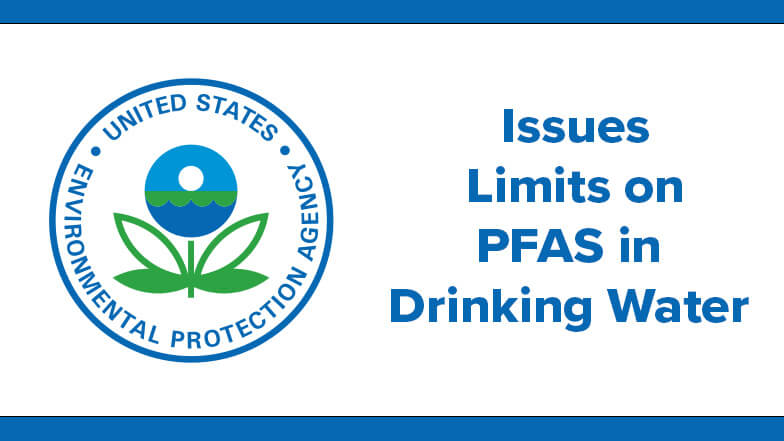Plumbing issues near water sources can be a serious concern. The EPA plays a key role in regulating these issues.
Plumbing problems near water can lead to contamination. This poses health risks and environmental damage. The Environmental Protection Agency (EPA) sets standards to protect our water. Understanding the EPA’s guidelines helps homeowners and plumbers address these problems. This blog will explore common plumbing issues near water.
We will also discuss how the EPA’s regulations help prevent and manage these problems. By the end, you will know how to keep your water safe and your plumbing in check.

Credit: www.apmreports.org
Epa Regulations On Plumbing
The Environmental Protection Agency (EPA) plays a key role in regulating plumbing. Their guidelines protect water quality and public health. These regulations impact plumbing systems near water sources. Understanding these rules is crucial for compliance and safety.
Key Guidelines
EPA guidelines cover many aspects of plumbing. These include materials, installation practices, and maintenance. Certain materials are restricted due to potential hazards. Lead-free fixtures and pipes are mandatory. Regular inspection and maintenance are also essential.
Compliance Requirements
Compliance with EPA regulations is mandatory for all plumbing projects. This includes homes, businesses, and public buildings. Proper documentation is needed for each project. Fines and penalties apply for non-compliance. Keeping records helps ensure all standards are met.
Following EPA guidelines ensures safe drinking water. It also helps avoid costly repairs and legal issues. Contractors must stay updated on any changes in regulations. Regular training and certifications are beneficial.
Common Plumbing Issues Near Water
Living near water can be a dream come true. The serene views and calming sounds are unbeatable. But, it comes with its own set of challenges, especially when it comes to plumbing. Homes near water bodies often experience unique plumbing issues. Understanding these problems can help you tackle them effectively. Let’s dive into some common plumbing issues you might face.
Leak Detection
One of the most common issues near water is leaks. Water can easily seep into cracks and crevices, making leak detection a challenging task. Imagine walking into your basement and finding a small pool of water. Not fun, right? Leaks can cause significant damage if not addressed quickly.
- Listen for unusual sounds: Hear a dripping sound? It could be a hidden leak.
- Check your water bill: A sudden spike might indicate a leak.
- Look for damp spots: These can appear on walls, ceilings, or floors.
Early detection can save you a lot of trouble. Regular inspections and being vigilant can help you catch leaks before they become a big issue.
Pipe Corrosion
Another significant problem is pipe corrosion. Water near coastal areas, for example, can be more corrosive due to the higher salt content. This can cause your pipes to wear out faster. And let’s face it, nobody wants to deal with rusty pipes.
- Watch for discolored water: Brown or reddish water can be a sign of rust.
- Check for a metallic taste: Corroded pipes can affect the taste of your water.
- Inspect for leaks and cracks: Corrosion can weaken pipes, leading to leaks.
Using corrosion-resistant materials and regular maintenance can help prolong the life of your pipes. It’s a small effort that can save you from major headaches down the line.
In summary, while living near water has its perks, it also comes with unique plumbing challenges. Staying proactive and vigilant can help you enjoy the best of both worlds – the beauty of water and a well-maintained home.
Impact Of Water Quality
The quality of water affects many aspects of daily life. Poor water quality can lead to various plumbing issues. Contaminated water may damage pipes and fixtures. This can lead to costly repairs. Understanding the impact of water quality is crucial.
Contaminants To Watch
Several contaminants can affect water quality. Lead is a major concern. It can enter water through corroded pipes. High levels of lead can cause health problems. Another common contaminant is chlorine. It is used to disinfect water but can corrode pipes over time.
Iron and manganese can stain plumbing fixtures. They can also affect the taste of water. Bacteria and viruses in water are harmful. They can cause illnesses. Keeping an eye on these contaminants is important for water safety.
Testing Procedures
Regular water testing is essential. It helps identify contaminants early. There are various methods to test water quality. Home testing kits are available. These are easy to use. They can provide quick results.
Professional testing is more accurate. It involves collecting water samples. These samples are analyzed in a lab. The results provide detailed information. They help in taking corrective actions. Testing water quality helps maintain safe and clean water.
Preventative Measures
Preventative measures are crucial for avoiding costly plumbing issues near water sources. Taking the right steps can save you time, money, and stress. By focusing on regular maintenance and protective coatings, you can ensure your plumbing system remains in top condition.
Regular Maintenance
Regular maintenance helps keep your plumbing system running smoothly. Inspect pipes and fixtures regularly for any signs of wear or damage. Fixing small issues early prevents larger problems later on. Schedule professional inspections at least once a year. A trained plumber can spot potential issues you might miss.
Check for leaks around sinks, toilets, and other fixtures. Even small leaks can lead to big problems. Ensure your water heater is functioning correctly. Flushing it yearly removes sediment buildup, improving efficiency and lifespan. Regularly clean out drains to prevent clogs. Use a drain screen to catch debris and reduce the risk of blockages.
Protective Coatings
Applying protective coatings to pipes and fixtures can extend their life. These coatings shield against corrosion and wear. Choose coatings suitable for your specific plumbing materials. Copper, steel, and plastic pipes have different requirements.
Protective coatings are especially important for pipes exposed to harsh conditions. Pipes near saltwater or chemicals need extra protection. Consider using epoxy or other specialized coatings. These can be applied by a professional for the best results.
Ensure that all outdoor pipes are properly insulated. This prevents damage from freezing temperatures. Insulation also helps maintain water temperature, reducing energy costs. Regularly check the condition of these coatings and reapply as needed. Proper maintenance of protective coatings can save you from unexpected plumbing failures.
Emergency Solutions
Plumbing issues near water sources can lead to serious problems. A quick response is key to minimizing damage. Knowing the right steps to take during a plumbing emergency can save time and money. This section will guide you through immediate actions and when to seek professional help.
Immediate Actions
First, turn off the water supply. This stops further water damage. Next, locate the source of the leak. Use a bucket to catch dripping water. This prevents water from spreading.
If you notice a burst pipe, wrap it with a cloth. This helps control the leak until help arrives. For clogged drains, avoid using chemical cleaners. They can damage pipes further. Instead, use a plunger to try and clear the blockage.
Always keep a wrench and plunger handy. These tools are essential for handling minor plumbing issues. If the issue seems severe, do not attempt complex fixes. Call for professional help immediately.
Professional Help
Some plumbing problems require expert intervention. A professional plumber has the right tools and experience. They can quickly diagnose and fix serious issues. For example, underground pipe leaks need specialized equipment.
Professional plumbers also ensure repairs meet safety standards. This prevents future problems and ensures your home stays safe. Emergency plumbing services are available 24/7. Do not hesitate to call them during a crisis.
Keep the contact details of a reliable plumber. This ensures you can get help quickly. Regular maintenance checks by professionals also prevent emergencies. They can spot and fix minor issues before they become big problems.

Credit: www.epa.gov
Safety Tips For Homeowners
As a homeowner, ensuring the safety of your plumbing system near water sources is crucial. The Environmental Protection Agency (EPA) provides guidelines to help maintain a safe and efficient plumbing system. Following these tips can prevent major issues and protect your home from water damage.
Proper Inspections
Regular inspections are essential. Hire a professional to check your plumbing system annually. They can identify potential problems early. Look for leaks, corrosion, and blockages. These inspections ensure your system runs smoothly. Check all exposed pipes for rust or wear. This can prevent unexpected failures.
Diy Fixes
Some minor fixes you can handle yourself. Fixing a dripping faucet is simple. Turn off the water supply first. Then, replace worn-out washers or seals. Unclogging a drain is another easy task. Use a plunger or a drain snake. Avoid chemical drain cleaners. They can damage pipes. Tighten loose connections with a wrench. Ensure you do not overtighten.
Technological Advancements
Technological advancements have brought significant changes to plumbing systems. New technologies help to save water and protect the environment. These innovations also make it easier to manage plumbing issues near water sources. Smart plumbing systems and water leak sensors are two examples of these advancements.
Smart Plumbing Systems
Smart plumbing systems use technology to monitor and control water usage. They help reduce water waste and prevent plumbing problems. These systems can detect issues early, saving time and money. Some smart systems can be controlled using a smartphone. This allows for easy monitoring from anywhere. Smart plumbing systems are becoming more popular in homes and businesses.
Water Leak Sensors
Water leak sensors are a valuable tool for preventing water damage. They can detect leaks early, alerting you to potential problems. Some sensors can shut off the water supply to prevent further damage. This can save money and protect your property. Water leak sensors are small and easy to install. They are an important part of a smart plumbing system. Using these sensors can help maintain a safe and efficient plumbing system.

Credit: www.mcaa.org
Long-term Solutions
Addressing EPA and plumbing issues near water requires long-term solutions. These solutions focus on sustainable practices and upgrading infrastructure. Both approaches ensure that water systems remain safe and efficient.
Sustainable Practices
Implementing sustainable practices is crucial for long-term water safety. Using eco-friendly materials in plumbing reduces environmental impact. Regular maintenance also ensures that systems run efficiently.
Water conservation is another key practice. Installing low-flow fixtures can greatly reduce water usage. Educating communities about water-saving habits helps too. Sustainable practices benefit both the environment and the community.
Upgrading Infrastructure
Old plumbing systems often cause water issues. Upgrading infrastructure is a long-term solution. Replacing outdated pipes prevents leaks and contamination. Modern materials are more durable and safer for water systems.
Advanced technology can also improve plumbing. Smart sensors detect leaks early, preventing major problems. Upgrading infrastructure ensures a safer, more reliable water supply. Investing in modern systems pays off in the long run.
Frequently Asked Questions
Does Epa Regulate Tap Water?
Yes, the EPA regulates tap water in the United States. They set and enforce standards to ensure safe drinking water.
What Is The Ground Water Rule Epa?
The EPA’s Ground Water Rule protects public health by reducing risks from pathogens in public water systems using ground water sources.
What Does The Epa Do To Support Water Safety?
The EPA enforces water quality standards, monitors contaminants, and supports wastewater treatment. They fund research and provide grants for safe drinking water.
What Does The Epa Say About Water Pollution?
The EPA states water pollution harms ecosystems, contaminates drinking water, and poses health risks. They regulate pollutants to protect water quality.
Conclusion
Addressing plumbing issues near water is crucial for a safe home environment. The EPA provides guidelines to help prevent water contamination and damage. Regular inspections and maintenance can save money and ensure clean water. Don’t ignore small leaks; they can lead to bigger problems.
Always consider professional help if unsure about plumbing issues. Staying informed and proactive will protect your home and health. Remember, a well-maintained plumbing system is key to a stress-free life.
